Converting The Picture Book Attic, by Pippa Goodhart
In recent years there’s been a trend for converting house attics into proper rooms. What had held dust and rats, water tanks and junk, have become studies, en-suite bedrooms, artist’s studios, and more. Well, I think it is time to do the same thing for picture books. There is a similarly lovely big expanse of room that is often under-used in picture books, and that’s the endpapers. We’re missing an opportunity if we don’t use them.
Endpapers are exactly that; the paper at the end of each book, joining cover to content. That’s their job. Most endpapers are left as bare white paper, and useful for old-fashioned library Return Due Date stickers to be stuck to, but that’s about all. I’ve noticed how often it is the blank endpapers of library picture books which get scribbled on by small children. Are they trying to tell us something? “Use this space!” And some picture books do.
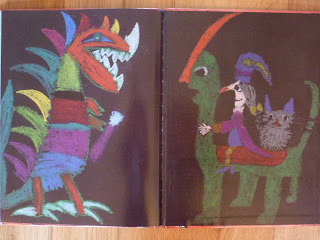
Korky Paul cleverly hands-over the endpaper artwork to children. These pictures of Winnie the Witch and cat Wilbur with dinosaurs are by Park Jung-Eum and Park Ji-Eun, aged seven. They are wonderfully bold, dramatic and fun pictures which must give children a pleasing can-do feeling in knowing that people of their own age can have good work published.
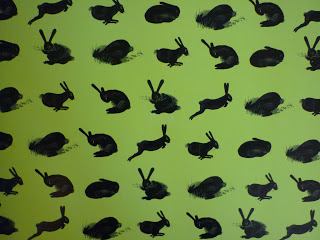
Jo Empson uses the endpapers in Rabbityness to give a kind of rabbit wallpaper of different rabbit poses; very attractive, and an appetiser for the story to come.
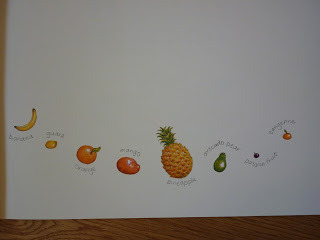
Eileen Browne uses the endpapers for Handa’s Surprise to show and name fruits at one end of the book, and wild animals at the other end, adding interesting lessons to what is already one of the best picture book stories ever.
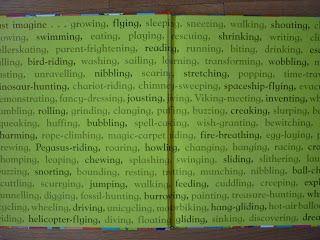
My You Choose and Just Imagine books have illustrations crammed with images but have little text. I was a child who found reading hard, and was always relieved to find a book that didn’t demand much reading. But there are children who relish new words to read. So we’ve used the endpapers to list hundreds of words, offering a kind of treasure hunt game for those who like reading the words (they all name things to be found in the pictures), but placed in the book so that they are not a necessary part of the book experience if reading words isn’t something you enjoy.
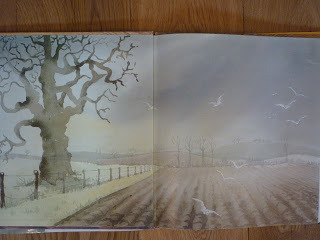

Helen Oxenbury’s beautiful pictures on the endpapers of Farmer Duck are glorious. Nothing ‘childish’ about them, and yet I’m sure that children sit and absorb and lot from them, both for their beauty and for what they reflect from the story. At the start we see the farm landscape in winter; bleak and harsh. By the end of the book that same scene has blossomed into warm colourful summer.
I’ve just asked my editor if a new book that is (hopefully!) on its way to publication might have a board game on its endpapers.
There are so many way in which endpapers might add to picture books. They might add information relevant to a story, for example with a map of where the story takes us, or non-fiction information relevant to the fictional tale. They might add a game or an activity to complement a story. How about a recipe or a quiz, instructions on how to make a paper aeroplane, or black and white pictures to be photocopied or traced for colouring in? Or simply add decoration to make a book more beautiful.
When books are fighting for sales against so many other attractions, an extra ‘room’ in a book might just make it a winner. What other examples of extending stories into the endpapers have you found, or can you think of?
Published on June 13, 2013 16:30
No comments have been added yet.



